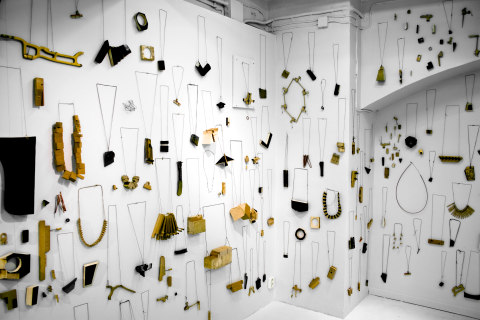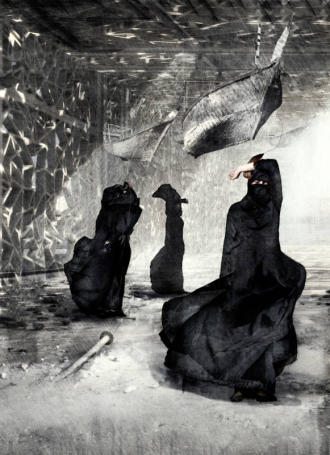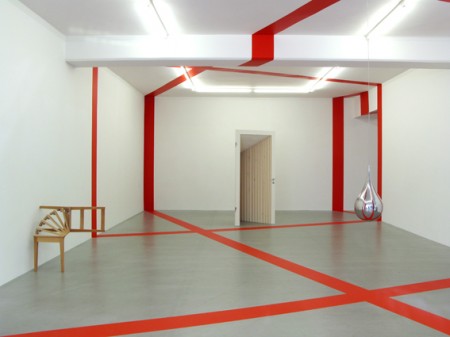| Jonas Nobel, view of Display of Loss—This Play We Lost, 2010, image: Galleri Charlotte Lund |
A narrative installation inspired by his mythical novel that also serves as an entry point, Jonas Nobel’s fourth solo exhibition, “Display of Loss—This Play We Lost,” offers his svelte sculptural version of a raft, as well as a geometric mountain range and a porthole-framed sketch with view of a tumultuous sea. The works are connected to the novel Nobel has written, which shares a title with the exhibition and tells the story of a burdened crew destined to fail in delivering unwanted merchandise to an infinite number of harbors, instead ending up shipwrecked on an island, disillusioned, and haunted by memories from their earlier lives. More »








